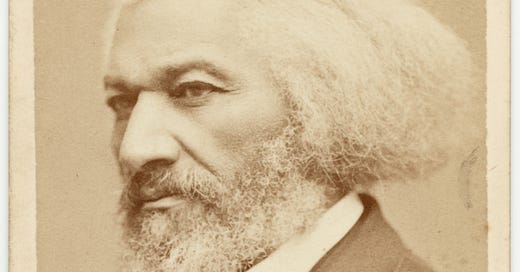Introduction
September 3, 1838, dawned as any other day in Baltimore. But for Frederick Douglass, this day would be unlike any other he had ever experienced.
That morning, he walked to the train station with borrowed identification papers of a free black sailor in his pocket. These papers were a lifeline, but also a significant risk. The image of the person on them didn't resemble Frederick. Still, the American eagle imprinted on the papers gave them an air of official authority. Frederick hoped that would be enough to see him through. It also helped that he was dressed in the style of a sailor and had the knowledge of one. People tended to be a kinder to sailors. Though Frederick was not one himself, he understood the profession well from having worked on the docks.
"My knowledge of ships and sailor's talk came much to my assistance, for I knew a ship from stem to stern, and from keelson to cross-trees, and could talk sailor like an 'old salt,'" he would say.
The moment's weight bore down on him as he approached the station. Keeping his distance to avoid unwanted interactions, he steadied his nerves and boarded just as the train began to pull away.
The rhythmic chugging of the train echoed the pounding of Frederick's heart. He was anxious. The train moved fast but felt slow. Then, the conductor came to check Frederick's papers and collect the fare. This was the moment Frederick was worried about.
"I suppose you have your free papers?" the conductor asked Frederick.
"No, sir; I never carry my free papers to sea with me."
"But you have something to show that you are a free man, have you not?"
"Yes, sir. I have a paper with the American eagle on it, and that will carry me round the world."
The conductor gave a cursory look at Frederick's papers, collected the fare, and continued. Soon, the South was behind Frederick. He passed through Philadelphia and continued his journey to New York City, where the sprawling landscape greeted him.
When Frederick stepped off the train the following morning and stood amidst the bustling crowds of New York, he finally did so as a free man.
Early Life and Enslavement
Like most enslaved people, Frederick didn't know his birthday. He just knew that his birth happened sometime around 1817 in Talbot County, Maryland. He also didn't know who his father was. Though based on rumors, it was the plantation master. And as for his mother - she didn't live with Frederick. She was moved during his infancy and enslaved on a plantation about a dozen miles away. His memories of her were sparse. Just a handful of times they met, when she'd walk at night to be with her son for a few hours before heading back. She had to be at work in the morning. Those visits ended when she passed away around the time Frederick was seven years old. Such went the beginning of the young boy's life. Father unknown, mother miles away at first, and then orphaned.
Keep reading with a 7-day free trial
Subscribe to Historical Snapshots to keep reading this post and get 7 days of free access to the full post archives.




